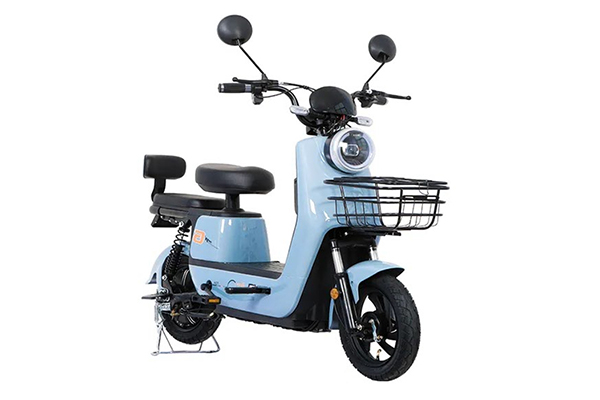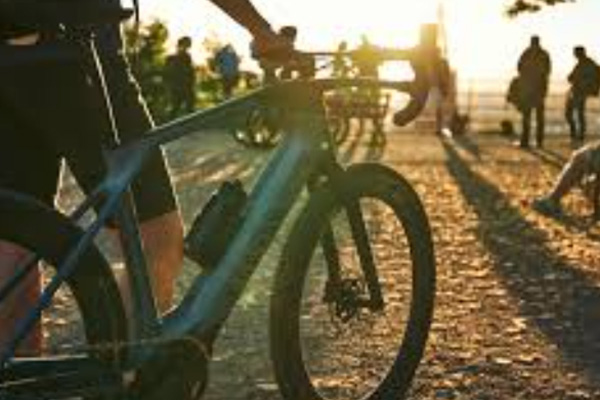As a manufacturer in the electric mobility space for over a decade, I’m Allen. I’ve watched countless trends come and go from my factory floor here in China. But the rise of the electric gravel bike is something different. It’s not just a trend; it’s a revolution in how people experience cycling. For my partners like David Miller, a seasoned e-bike distributor in the USA, understanding this evolution is key to success. This article is for you, David, and for every business leader looking to stock the right products for the future. We’ll break down what makes these bikes tick, what to look for in the best electric gravel bikes 2025, and how to identify a quality product that will fly off your showroom floor. This is more than just a bike review; it’s a manufacturer’s inside guide to a booming market.

What is an Electric Gravel Bike, and Why Should You Care?
So, what’s all the buzz about? At its core, an electric gravel bike is the ultimate hybrid. It combines the speed and efficiency of a road bike with the rugged capability of an electric mountain bike. Imagine a bike that’s fast on the pavement, stable on dusty gravel tracks, and comfortable enough for all-day adventures. Now, add a smooth, powerful motor to flatten hills and extend your range. That’s the magic of gravel e-bikes. These bikes combine the best of both worlds, featuring a drop-bar handlebar for multiple hand positions, clearance for much wider tires than a traditional road bike, and a geometry built for stability on unpredictable surfaces.
The reason you, as a distributor or retailer, should care is simple: versatility. The modern consumer doesn’t always want three different bikes for their various hobbies. They want one bike that can do it all. An electric gravel bike is perfect for the weekday commute, the weekend adventure on fire roads, and even light bikepacking trips. This multi-purpose nature drastically widens your customer base. The electric gravel bikes offer a solution for the city dweller dreaming of the countryside, the aging cyclist who still wants to tackle big climbs, and the newcomer looking for a single, confidence-inspiring e-bike. From our factory’s perspective, the demand for this category is growing exponentially, far outpacing many other segments.
What Motor System Defines the Best Electric Gravel Bike in 2025?
This is where things get technical, and it’s the most critical question for a buyer like David. The motor is the heart of any e-bike. For an electric gravel bike, you’re looking for a perfect balance: enough power for steep, loose climbs but lightweight and efficient enough that the bike still feels agile and fun to pedal when the assistance is off. The leading motor system providers dominate this space for a reason—they offer reliability and performance.

- Bosch: The Performance Line SX is a game-changer. It’s a lightweight motor that provides up to 55Nm of torque but feels incredibly natural. It’s ideal for riders who want a boost, not a rocket. The classic Performance Line CX motor, with its higher torque, is also found on more rugged, adventure-focused e-gravel models.
- Specialized (Mahle & Brose): Specialized has a two-pronged approach. The Specialized Turbo Creo 2 uses their own SL 1.2 motor (developed with Mahle), which is famous for being incredibly light and quiet. It’s designed to augment your power, not dominate the riding experience. This is perfect for the fit rider who wants to go further and faster. The system is subtle, making the bike feel more like an acoustic bike with superpowers.
- TQ: The TQ-HPR50 motor is another champion of the “silent and light” category. It uses a unique harmonic pin-ring transmission, making it one of the quietest and smallest bike motors available. With 50Nm of torque, it provides a substantial but smooth power assistance.
- Fazua: The Fazua Ride 60 motor system is brilliant. It delivers 60Nm of torque in a compact, lightweight package. What’s more, the Fazua Ride system often features a removable battery, allowing the rider to go even lighter if they choose. This is a huge selling point.
- Shimano: Shimano‘s EP-series motors, like the EP8 and the newer EP801, are renowned for their reliability and smooth power delivery. While often seen on e-MTBs, their refined feel and customizability make them a great choice for powerful e-gravel bikes designed for challenging off-road terrain.
As a manufacturer, we work with these suppliers to ensure seamless integration. For a distributor, your choice of motor directly impacts your target customer. Are you selling to the hardcore athlete who wants a subtle boost (Specialized SL, TQ) or the adventurer who needs serious climbing power (Bosch CX, Shimano EP8)? Knowing this distinction is key.
| Motor System | Peak Torque | Key Feature | Best For |
|---|---|---|---|
| Bosch Performance Line SX | 55Nm | Lightweight and responsive | Performance-oriented riders |
| Specialized SL 1.2 | 50Nm | Extremely lightweight and quiet | Riders who want a natural feel |
| TQ-HPR50 | 50Nm | Near-silent operation | A stealthy, integrated experience |
| Fazua Ride 60 | 60Nm | Strong power-to-weight ratio | Versatile use, from sport to adventure |
| Shimano EP801 | 85Nm | High power and reliability | Rugged, demanding off-road gravel riding |
How Crucial are Battery, Weight, and Geometry for a Gravel E-Bike?
Beyond the motor, the holy trinity for an electric gravel bike is battery, weight, and geometry. A powerful motor is useless if the battery dies halfway up a climb or if the bike handles like a tank. As we build these e-bikes, we obsess over finding the perfect balance. The goal isn’t always the biggest battery capacity; it’s the right capacity for the bike’s intended use, which keeps the overall weight down. For 2025, expect to see most e-gravel bike models with batteries in the 360Wh to 500Wh range. This provides ample range for most adventures without adding excessive bulk. Some systems, like those from Bosch and Specialized, also offer range extenders—small, bottle-cage-mounted extra batteries that are perfect for bikepacking.
Weight is the eternal enemy. The extra weight of a motor and battery can make a bike feel sluggish. This is why brands like Specialized with their Creo 2 have been so successful. By using a lightweight carbon frame and a compact SL 1.2 motor, they create a lightweight e-bike that feels incredibly agile. The geometry is just as important. A gravel e-bike needs to be stable at speed on loose surfaces but still feel responsive. This means a longer wheelbase and a slacker head tube angle than a typical road bike, but not as extreme as a mountain bike. The top tube length and stack height are also optimized for long-distance comfort, putting the rider in a slightly more upright position.
Finally, materials matter. Carbon fiber frames are popular for their ability to be molded into complex shapes and for their vibration-damping properties, which is a huge plus on rough gravel tracks. However, high-quality aluminum frames, like those on the Ribble CGR AL e, offer fantastic performance and durability at a much more accessible price point. When you are sourcing products, offering both options allows you to cater to different budgets and customer needs effectively. We ensure that our high-quality batteries are integrated seamlessly into these frames, optimizing the center of gravity for a superb riding experience.
Do You Really Need Suspension on an Electric Gravel Bike?
This is a hot topic in the gravel e-bike world. Traditionally, gravel bikes were rigid. But as riders push them onto rougher and more technical terrain, the demand for suspension has grown. However, we’re not talking about the massive 150mm travel forks you see on mountain bikes. For gravel riding, the suspension is all about “chatter control”—smoothing out high-frequency vibrations from washboard roads and rocky trails to reduce rider fatigue and improve control.

- Specialized Future Shock: This is a small suspension system built into the headset, providing 20mm of travel right under the handlebar. The Specialized Turbo Creo 2 features the Future Shock 3.0, and it’s brilliant because it suspends the rider, not the whole bike. This keeps the front end stiff and responsive while isolating your hands and arms from bumps.
- Short-Travel Forks: Companies like RockShox and Fox offer gravel-specific suspension fork models, like the Rudy and 32 Taper-Cast, respectively. These provide 30-40mm of tunable air suspension and can be a fantastic upgrade for riders who frequently tackle singletrack or very rough terrain.
- Frame Compliance and Seatposts: Many manufacturers design “flex zones” into the carbon seatstays and seat tubes of the frame to provide a bit of passive suspension. This is often paired with a compliant carbon seatpost or even a short-travel dropper post, which not only adds comfort but also allows the rider to lower their center of gravity on steep descents. The BMC URS AMP LT is a prime example, incorporating rear micro-suspension into its design.
So, is suspension necessary? For smooth gravel and road use, no. But for the rider looking to maximize comfort and capability on a mix of gravel and trails, it’s a feature that will be increasingly standard on premium 2025 models. It’s a key differentiator you can offer your customers.
What to Consider When Buying: Tyres, Brakes, and Mounting Points
The devil is in the details, and for an electric gravel bike, the finishing kit can make or break the experience. As a buyer, these are the components you must scrutinize. First, tyre clearance. A modern gravel e-bike should comfortably fit a 45mm tyre, with many premium models clearing up to 50mm (or 2.1 inches). This versatility allows the end-user to mount a slick, fast-rolling tyre for the commute or a knobby, high-volume gravel bike tyres for serious off-road adventures. Wider tires run at lower pressures provide more grip and comfort, which is essential when dealing with the added power and weight of an e-bike.
Brakes are a non-negotiable safety feature. Given the higher speeds and extra weight, all reputable gravel e-bikes will use hydraulic disc brakes. Systems from Shimano (like their GRX line) and SRAM (the Apex, Rival, and Force groupsets) are the industry standard. They offer incredible stopping power and modulation in all weather conditions. Ensure the bikes you source are equipped with rotors of at least 160mm, with 180mm being preferable on the front for better heat dissipation and power.
Finally, look for practicality. A great e-gravel bike should have plenty of mounting points. This means bosses on the fork, top tube, down tube, and seatstays for attaching racks, fenders, extra bottle cages, and frame bags. These features transform a weekend fun machine into a capable bikepacking rig or a rugged all-weather commuter. For your customers, these small details signal that the bike is well-thought-out and truly built for adventure. When we design our bikes, we include these features because we know that’s what discerning riders—and by extension, savvy distributors—are looking for. A bike with good brakes needs a reliable brake system assembly to ensure safety and performance.
A Manufacturer’s Pick of the Best: Analyzing Top Market Models
From my factory floor, I see what designs are gaining traction. Let’s look at a few benchmark models and analyze why they are considered among the best electric gravel bikes on the market. This isn’t just a list; it’s a study of successful product design.
- Specialized Turbo Creo 2: The “Integrated Speed” champion. Its success lies in the complete system integration. The lightweight frame, the subtle SL 1.2 motor, and the innovative Future Shock suspension work in harmony. It doesn’t feel like an e-bike; it feels like a super-bike. Its target customer is the performance-focused cyclist who values a natural ride feel above raw power.
- Ribble CGR AL e: The “People’s Champion.” This bike proves you don’t need a carbon frame to have one of the best gravel bikes. It uses a well-designed aluminum frame, a reliable Mahle X35+ hub-drive motor, and the Shimano GRX groupset. Its appeal is its incredible value and practicality. It’s the perfect entry point into the e-gravel world and a fantastic option for daily commutes and weekend fun.
- BMC URS AMP LT: The “Adventure Tank.” This e-bike is for the rider who sees a trail and thinks, “I wonder where that goes.” It combines a powerful TQ motor with front and rear micro-suspension and massive tyre clearance. It blurs the line between a gravel bike and a mountain bike. Its success comes from its uncompromising focus on off-road capability and comfort.
These bikes feature different philosophies, but they all succeed because they have a clear identity and a well-executed design. When you evaluate potential products for your inventory, ask yourself: Who is this bike for? Does every component serve that purpose? That’s the key to picking a winner. Many of these top-tier bikes have features that are becoming standard, like advanced displays and controls, which rely on robust internal wiring managed by an e-bike controller junction box.
Is a Gravel Electric Bike the Ultimate All-in-One Machine?
So, can you really use your electric gravel bike for everything? The answer is a resounding “almost.” For the vast majority of cyclists, it is the most versatile e-bike they could own. Its ability to be fast on the road during the week and capable on trails during the weekend is unmatched. The pedal assistance makes it an ideal tool for commuting, allowing you to arrive at work fresh and without needing a shower. You can load it up with bags for a bikepacking trip and the motor will make hauling that extra gear a breeze.
Where does it fall short? It won’t replace a dedicated downhill mountain bike for hitting massive jumps, nor will it beat a featherlight e-road bike in a criterium race. But for the 95% of riding that happens in between those extremes, the electric gravel bike excels. This incredible range of use is precisely why electric gravel bikes are gaining so much popularity. They simplify ownership and maximize fun. As a business, selling a product that solves multiple problems for a customer is always a winning strategy. It’s a single purchase that unlocks a world of possibilities, from practical transportation like our YONSLAND X1 electric tricycle to high-speed adventures.
How Do Certifications and Quality Control Impact Your Purchase?
For a business owner like David, this is the most important section. A great design is meaningless without quality manufacturing and proper certification. This is where a long-term, transparent partnership with a manufacturer like myself becomes invaluable. When you’re importing e-bikes, especially those with lithium-ion batteries, you must ensure compliance with international standards.
Key certifications to demand are:
- EN 15194: This is the European standard for Electrically Power Assisted Cycles (EPACs). It covers everything from the mechanical strength of the frame to the electrical safety of the motor system. Compliance is mandatory for selling in the EU.
- UL 2849: This is the key standard in North America for the entire e-bike electrical system. It ensures the battery, charger, and controller have been rigorously tested for fire safety. Given the concerns around battery fires, this is a non-negotiable standard for the US market.
- ISO 4210: This standard covers the safety requirements for conventional bicycles, and many of its mechanical tests for frames, forks, and other components are also applied to e-bikes.
Beyond paper certificates, you need to trust your supplier’s quality control process. Ask potential partners about their batch testing procedures, their frame fatigue testing machines, and their traceability for key components like the motor and battery cells. A good manufacturer will welcome these questions and be able to provide detailed documentation. Production delays and inconsistent quality are major pain points for importers. A reliable factory mitigates these risks, ensuring the products you receive meet your customers’ expectations every time.
The Future of Road and Gravel: What’s Next for E-Gravel?
Looking ahead to 2025 and beyond, the evolution of the electric gravel bike will continue down the path of integration and specialization. We’ll see even lighter and more efficient motor systems become the norm. Battery capacity will likely hold steady, but the energy density of cells will improve, making batteries smaller and lighter for the same range. The line between electric road bikes and e-gravel bikes will continue to blur, with many bikes powered by either system, allowing for customization.
Expect to see more integrated technology. Smart systems that can automatically adjust power output based on rider effort or terrain are already emerging. Connectivity with GPS devices and smartphones for advanced tuning and diagnostics will become standard. We’ll also see a wider variety of e-gravel models, from ultra-lightweight race machines to full-suspension “monster gravel” bikes designed to tackle the most demanding off-road terrain. The core appeal, however, will remain the same: freedom and versatility.
Things to Remember
As you plan your inventory for 2025, keep these key points in mind:
- Versatility Sells: The electric gravel bike is the ultimate all-rounder. Highlight its ability to handle everything from the daily commute to weekend adventures.
- The Motor Matters Most: Know the difference between lightweight, subtle motors (Specialized, TQ) and powerful, high-torque units (Bosch, Shimano). Stocking a mix allows you to cater to different types of riders.
- Balance is Key: The best e-gravel bikes balance power, battery range, and low weight. Don’t be fooled by the biggest battery; look for an efficient and well-integrated system.
- Details Define Quality: Pay close attention to tyre clearance, quality hydraulic brakes, and the number of mounting points. These features show a well-thought-out design.
- Suspension is the Future of Comfort: For premium models, short-travel suspension (like the Future Shock or gravel-specific forks) is becoming a key selling point for comfort and control.
- Certifications are Non-Negotiable: Insist on proper safety certifications like EN 15194 and UL 2849 to protect your business and your customers. Partner with a manufacturer who prioritizes quality and transparency.
Post time: Jul-21-2025




